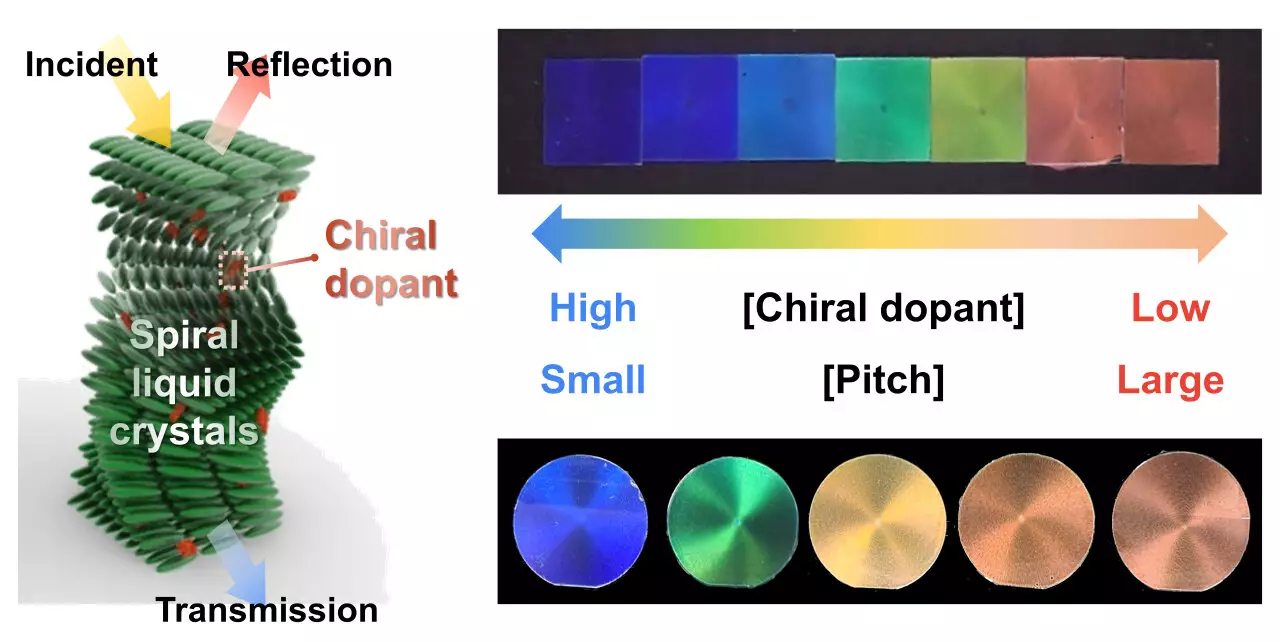In a groundbreaking development in the field of radiative cooling, Dr. Jin Gu, Kang and his team at the Nanophotonics Research Center at the Korea Institute of Science and Technology (KIST) have successfully created a colorful radiation-cooling liquid crystal material that not only cools without external power but also emits vibrant colors simultaneously.
Traditional radiative cooling materials, designed for daytime use, are typically colored white to reduce sunlight absorption and achieve optimal cooling performance. However, the drawback of these materials is that they lack aesthetic appeal, making them unsuitable for use in buildings or vehicles where visual appearance is important.
To address this limitation, Dr. Kang and his team developed colored radiative cooling materials using bent spiral liquid crystal photonic crystals. Unlike previous colored materials that relied on light absorption for color production, these innovative photonic crystals utilize light reflection to achieve vivid and distinct colors.
Enhanced Cooling Performance
By combining the colored radiation-cooling liquid crystal material with upper transparent and lower metallic thin films, the researchers were able to achieve a significant temperature reduction compared to conventional colored paint and ambient air. This enhanced cooling performance makes the material suitable for applications such as reducing air conditioning consumption in buildings and vehicles, as well as providing power-free cooling for outdoor leisure items and military tents.
Practical Applications and Advantages
The colored radiation-cooling liquid crystal material offers a cost-effective and simple fabrication process through spin coating, making it a practical solution for various cooling needs. Its ability to combine both cooling functionality and aesthetic appeal makes it a versatile material for a wide range of applications.
The development of colored liquid crystal materials for radiative cooling represents a significant advancement in the field of eco-friendly cooling technologies. With its unique combination of cooling performance and vibrant colors, this innovative material has the potential to revolutionize the way we approach cooling solutions in various industries. Dr. Jin Gu Kang and his team’s research pave the way for a more sustainable and visually appealing future in cooling technology.


Leave a Reply